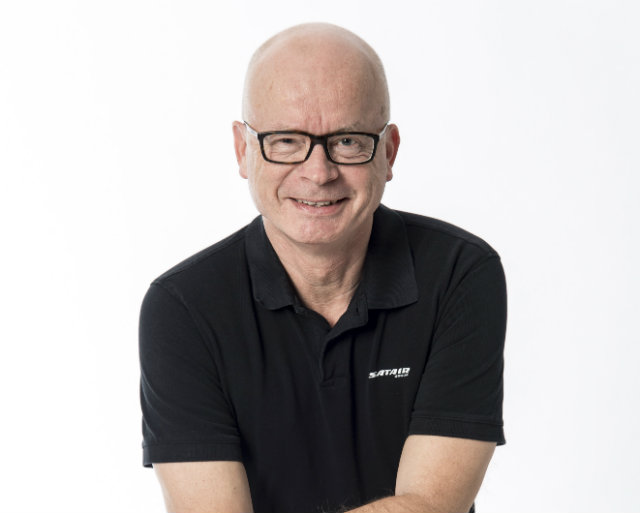Steen Karsbo is vice-president of business development for aftermarket services provider Satair.
What ignited your interest in aviation?
The easy answer is that my Dad was in the Danish Air Force, and this led to the job I have today. Actually it is less romantic. I started in Satair by coincidence in 1980 after leaving a boring job as a bank trainee. Satair breathed aviation totally and I caught the bug early on. It was extremely contagious and we had some really strong pioneers in the business.
What have been the highlights of your career?
There are three highlights. The formation of the product management function in the 1990s has led to a business that I lead, and which today employs more than 70 people all across the world. This was followed by developing a strong reporting system, allowing us to manage the business in great detail and which is highly appreciated by our OEM partners. Thirdly, the Airbus acquisition of Satair in 2011 led to a good price/share and some very happy shareholders. We found the perfect home for our company and for our employees, and the growth and opportunities created since then have been remarkable.
When I joined the company in 1980, we roughly turned over $7 million a year. That today equates to less than two days of sales for Satair. I sometimes wish our founding chief executive was still around to see how his initial idea developed into this very impressive company.
Tell us about the aftermarket activities at Satair?
Satair is a $1.8 billion turnover company with 1,300 employees, operating from 10 locations worldwide. A key integrated part of the Services by Airbus business unit, Satair has exclusive or primary distribution arrangements for aerospace component manufacturers, and supplies the parts to multi-fleet customer airlines and MROs. It also fulfils the material service support obligation for the in-service fleet of over 7,000 Airbus aircraft. Satair provides logistics, inventory and battery maintenance services up to full-scale outsourcing solutions like Integrated Material Services, where the entire material management for consumables and expendables is subcontracted to Satair. Satair offers such solutions across the entire value chain, connecting both ends of the aerospace aftermarket – from OEMs to airlines and MROs.

Satair
Tell us about your role?
As vice-president of business development, I work to attract new OEM partners to us and to convince existing OEM partners to further expand their relationship with us. My team is also involved in Airbus aftermarket developments. I am blessed with a very knowledgeable and experienced team. Recently, we have expanded our role to new segments including: nacelles (Safran), thrust reversers (Pratt& Whitney), actuation systems (UTAS) and ADS-B upgrade (Honeywell).
What are your challenges?
My biggest challenge is that things do take time from start to closure, and I have close to no patience with lengthy processes. Start to finish of a business development project can be three months for the really quick ones, and up to 18-20 months for those that require a lot of persuasive talking and negotiations. But it takes two to tango, so I have to accept this way of operating.
Satair is celebrating its 60th anniversary – what have been the big highlights?
Having been part of this for 38 years, with so many highlights, I think the three major events were: the decision, in the late 1980s/early 90s, to change the company focus from surplus/excess/used parts and to concentrate on signing contracts with OEMs. This was considered very fancy back then: business process re-engineering, or BPR. Secondly, the decision to take Satair public in 1997 changed our way of focusing and reporting and meant we spent more time with investors and major shareholders. It also increased our professionalism overall, and in hindsight this eventually made us interesting to Airbus.
Finally, the Airbus acquisition and the consequences this has had for many parts of our business. We have had tremendous access to new business opportunities and Satair is now a support cornerstone for the Airbus global fleet of aircraft.
How has the company changed since the acquisition by Airbus in 2011?
One change was the way we reported our business. Prior to the acquisition we reported to the stock market; a week later we reported to a new governance structure, naturally anchored in Toulouse. But something important that has been pretty stable from day one has been Airbus senior management's strong support for the continued autonomy of Satair, protecting the agility and the DNA of an extremely focused aftermarket organisation. This is not always easy inside such a huge organisation, but we have been able to uphold the old spirit of Satair. This makes me immensely proud, of course.
What are the next big trends in the aviation aftermarket?
The biggest trend right now is the two big airframers, Airbus and Boeing, wanting to take a larger part of the aftermarket. My expectation is that in the mid to late 2020s we will see a completely new model in place. Whether such a new model will be disruptive through new "outsiders" coming in, we shall have to wait and see – I am still waiting to see something really substantial here.
Search aerospace career opportunities now with Flight Jobs
Source: Flight International























